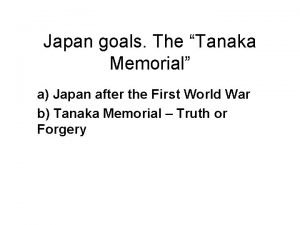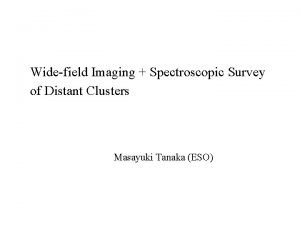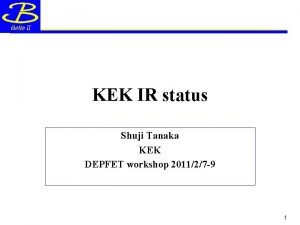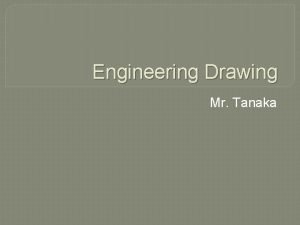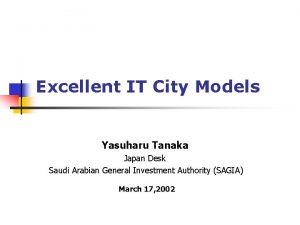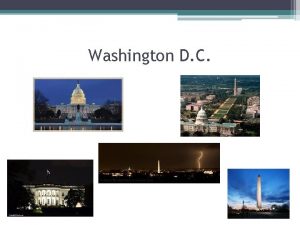Japan goals The Tanaka Memorial a Japan after












- Slides: 12

Japan goals. The “Tanaka Memorial” a) Japan after the First World War b) Tanaka Memorial – Truth or Forgery

The Tanaka Memorial – July 25, 1927 • It seems that it was by divine will that I should assist Your Majesty to open a new era in the Far East and to develop the new continental empire. • Japan cannot remove the difficulties in Eastern Asia unless she adopts a policy of Blood and Iron.

Tanaka Memorial • In order to conquer China we must first conquer Manchuria and Mongolia. • In order to conquer the world, we must first conquer China. • In the future if we want to control China, we must first crush the United States just as in the past we had to fight in the Russo-Japanese War.

Tanaka Memorial • If we succeed in conquering China the rest of the Asiatic countries and the South Sea countries will fear us and surrender to us. Then the world will realize that Eastern Asia is ours and will not dare to violate our rights. This is the plan left to us by Emperor Meiji.

Tanaka Memorial • Having China's entire resources at our disposal we shall proceed to conquer India, the Archipelago, Asia Minor, Central Asia, and even Europe. But to get control of Manchuria and Mongolia is the first step if the Yamato race wish to distinguish themselves on Continental Asia.

Tanaka Memorial • Although the power of Soviet Russia is declining, her ambition in Manchuria and Mongolia has not diminished for a minute. • We shall pour forces into North Manchuria as far as we can. When Soviet Russia intervenes, as they must, that is our opportunity for open conflict.

Beginning the Expansion • September 18, 1931 – Provocation at Mukden (now Shen-Yang) • Drummond – Secretary General of League of Nations – asks for end of the incident. • Wakatsuki – Prime Minister of Japan – promises withdrawal of forces. • Break-up of promise – September 30, 1931

• Chiang Kai-Shek’s position. • League of Nations begins discussions – November 16, 1931. • Creation of Lytton Commission – December 10, 1931. • Foundation of Manchukou – March 9, 1932 • P’u-i – “Emperor”

The report of Lytton Commission – September 1932 • Both Sides Blamed. • Manchuria has to receive autonomy inside China. • Japan has to withdraw forces from Manchuria. • Japan’s “answer” – capture of Shanghai-Guan. • Japan blamed in new Resolution – February 24, 1933.

• Japan leaves League of Nations – March 27, 1933. • Tientsin (T’ien-Ching) Treaty – Chiang Kai-Shek recognizes Manchukou.

Further aggression in China • • Incident near Peking (Beijing). Japanese taking Peking. Japan attack on Shanghai Captured.

The Conference at Brussels • World’s reaction on Japanese aggression in China. • Roosevelt and Japan. • The Conference at Brussels and its failure.
 Tanaka memorial ki
Tanaka memorial ki Strategic goals tactical goals operational goals
Strategic goals tactical goals operational goals Strategic goals tactical goals operational goals
Strategic goals tactical goals operational goals After me after me after me
After me after me after me If any man wants to come after me
If any man wants to come after me Andy tanaka
Andy tanaka Masayuki tanaka
Masayuki tanaka Diffusion bonding
Diffusion bonding Indice de tanaka hernia
Indice de tanaka hernia Main themes of burnt shadows slideshare
Main themes of burnt shadows slideshare Bolton's analysis inference
Bolton's analysis inference Orthographic drawing exercises
Orthographic drawing exercises General goals and specific goals
General goals and specific goals
